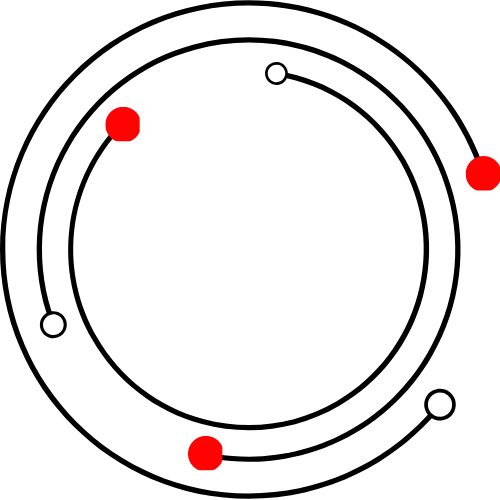In the ever-competitive business landscape, optimizing sales process efficiency stands as a critical factor for success. This blog post will delve into the various strategies and techniques that can help businesses streamline their sales process, enhance productivity, and ultimately, drive revenue growth. We'll explore the importance of sales process optimization, the role of technology, and how to implement these strategies effectively.
Understanding the Importance of Sales Process Efficiency
Sales process efficiency is not just about selling more in less time. It's about making the most of your resources, reducing waste, and improving customer satisfaction. An efficient sales process can help your team focus on what they do best - selling. It eliminates unnecessary tasks, reduces errors, and ensures that your team spends their time on activities that directly contribute to revenue.
The benefits of an efficient sales process extend beyond your sales team. It can lead to better customer experiences, as customers receive timely and accurate information. It can also improve your company's bottom line, as you're able to do more with less.
However, achieving sales process efficiency is not a one-time task. It requires continuous monitoring and improvement. You need to regularly evaluate your sales process, identify areas of inefficiency, and implement strategies to address them.
The Role of Technology in Optimizing Sales Process Efficiency
Technology plays a crucial role in optimizing sales process efficiency. Sales automation tools can help reduce manual tasks, improve accuracy, and speed up the sales process. They can automate tasks like data entry, follow-ups, and reporting, freeing up your sales team to focus on selling.
Customer Relationship Management (CRM) systems are another key technology for sales process efficiency. They provide a centralized platform for managing customer information, tracking sales activities, and analyzing sales performance. With a CRM system, your sales team can easily access customer information, track their interactions, and manage their sales pipeline.
However, technology alone is not enough. You also need to ensure that your team is properly trained to use these tools. This includes not only technical training but also training on how to use these tools to improve their sales process.
Strategies for Optimizing Sales Process Efficiency
There are several strategies that can help optimize sales process efficiency. One of the most effective is to standardize your sales process. This involves defining the steps that your sales team should follow, from initial contact to closing the sale. A standardized sales process ensures consistency, reduces errors, and makes it easier to train new team members.
Another strategy is to use data to drive decision-making. By analyzing your sales data, you can identify trends, spot opportunities, and make informed decisions. This can help you prioritize your sales activities, target your efforts more effectively, and improve your sales results.
Lastly, don't forget the importance of communication. Regular communication with your sales team can help identify issues, share best practices, and keep everyone aligned. This can be done through regular meetings, feedback sessions, and training sessions.
Implementing Sales Process Efficiency Optimization
Implementing sales process efficiency optimization is a multi-step process. It starts with a thorough review of your current sales process. This involves mapping out the steps, identifying bottlenecks, and understanding where inefficiencies lie.
Once you've identified areas for improvement, the next step is to develop a plan. This should include specific actions, timelines, and responsibilities. It's also important to set clear goals and metrics to measure progress.
The implementation phase involves putting your plan into action. This may involve training your team, implementing new tools, or changing your sales process. It's important to monitor progress, adjust as needed, and celebrate successes along the way.
Overcoming Challenges in Sales Process Efficiency Optimization
While optimizing sales process efficiency can bring significant benefits, it's not without its challenges. One of the biggest is resistance to change. Salespeople are often comfortable with their current process and may be reluctant to change. It's important to communicate the benefits of optimization, provide training, and support your team through the transition.
Another challenge is data quality. For your optimization efforts to be successful, you need accurate and complete data. This requires regular data cleaning, validation, and enrichment.
Lastly, don't underestimate the importance of leadership. Successful sales process optimization requires strong leadership to drive the change, overcome obstacles, and ensure that the benefits are realized.
The Future of Sales Process Efficiency
The future of sales process efficiency lies in continuous improvement and innovation. As technology evolves, so too will the tools and strategies for optimizing sales process efficiency. Artificial intelligence, machine learning, and predictive analytics are just a few of the technologies that are set to transform the sales process.
However, technology is just one piece of the puzzle. The human element will always be critical. Training, communication, and leadership will continue to play a crucial role in sales process efficiency.
In conclusion, optimizing sales process efficiency is not a one-time task, but a continuous journey. It requires a commitment to improvement, a willingness to embrace change, and a focus on both the human and technological elements of the sales process.
Wrapping Up: The Journey Towards Sales Process Efficiency
Optimizing sales process efficiency is a journey that requires continuous effort and improvement. It's about leveraging technology, implementing effective strategies, and overcoming challenges. With a commitment to optimization, businesses can streamline their sales process, enhance productivity, and drive revenue growth. The future of sales process efficiency lies in continuous innovation, and the businesses that embrace this will be well-positioned for success.

